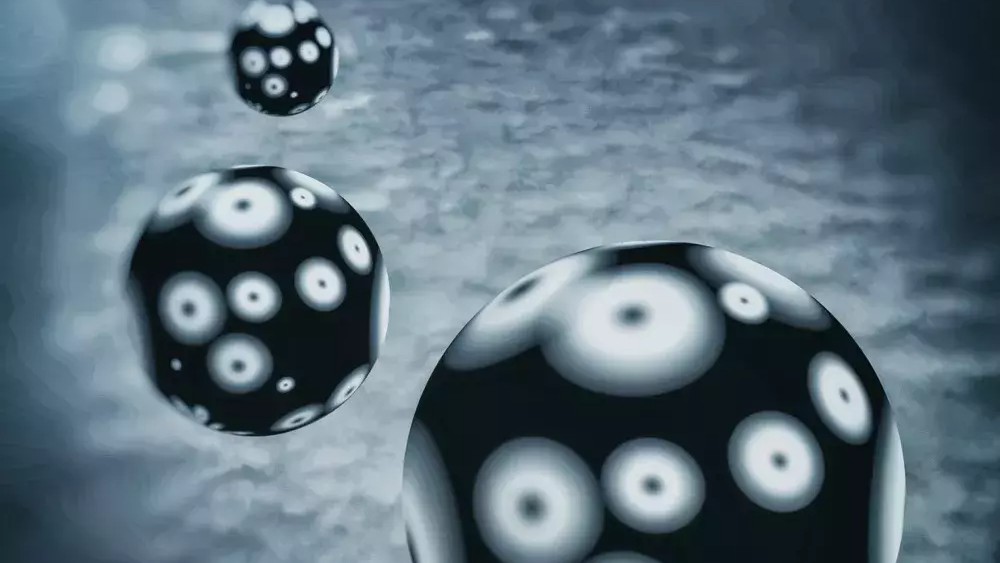'Ghostly' neutrinos spotted inside the world's largest particle accelerator for the first time
Signatures of neutrinos, or ghostly particles that rarely interact with others, were tentatively spotted in the Large Hadron Collider in 2021. Now, physicists have confirmed they are real.

For the very first time, physicists have created and detected high-energy "ghost particles" inside the world's largest atom smasher. The findings could help unlock the secrets of how stars go supernova.
The tiny particles, known as neutrinos, were spotted by the FASER neutrino detector at the Large Hadron Collider (LHC) — the world's largest particle accelerator, located at the European Organization for Nuclear Research (CERN) near Geneva, Switzerland.
Neutrinos earn their spectral nickname because their non-existent electrical charge and almost zero mass means they barely interact with other types of matter. True to their ghostly moniker, neutrinos fly through regular matter at close to the speed of light. The physicists presented their results at the 57th Rencontres de Moriond Electroweak Interactions and Unified Theories conference in La Thuile, Italy on March 19.
Related: Ghostly neutrino particles are blasting out of a nearby galaxy, and scientists aren't sure why
"We've discovered neutrinos from a brand-new source — particle colliders — where you have two beams of particles smash together at extremely high energy," Jonathan Feng, a physicist at the University of California Irvine and a co-spokesperson of the FASER Collaboration, said in a statement.
Every second, about 100 billion neutrinos pass through each square centimeter of your body. The tiny particles are everywhere — produced in the nuclear fire of stars, in enormous supernova explosions, by cosmic rays and radioactive decay, and in particle accelerators and nuclear reactors on Earth. In fact, neutrinos, which were first discovered zipping out from a nuclear reactor in 1956, are second only to photons as the most abundant subatomic particles in the universe.
But despite their ubiquity, the chargeless and near massless particles' minimal interactions with other matter makes them incredibly difficult to detect. Despite this many famous neutrino detection experiments — such as Japan's Super-Kamiokande detector, Fermilab's MiniBooNE, and the Antarctic IceCube detector — have been able to spot solar-generated neutrinos.
Get the world’s most fascinating discoveries delivered straight to your inbox.
But the neutrinos arriving to us from the sun are just one small slice of the ghost particles out there. On the other end of the energy spectrum are the high-energy neutrinos produced in gigantic supernova explosions and in particle showers when deep-space particles slam into Earth's atmosphere. These high-energy ghosts have remained a mystery to scientists until now.
"These very high-energy neutrinos in the LHC are important for understanding really exciting observations in particle astrophysics," Jamie Boyd, a CERN particle physicist and FASER co-spokesperson, said in the statement. The new detections could help explain how stars burn and explode, and how highly-energetic neutrino interactions spark the production of other particles in space.
To catch the subatomic specters, the physicists built a particle-detecting s'more: Dense metal plates of lead and tungsten sandwiching multiple layers of light-detecting gunk called emulsion. When high-powered beams of protons smash together inside the LHC, they produce a shower of byproduct particles, a small fraction of them neutrinos, that enter the s'more. The neutrinos from these collisions then slam into the atomic nuclei in the dense metal plates and decay into other particles. The emulsion layers work in a similar way to old-fashioned photographic film, reacting with the neutrino byproducts to imprint the traced outlines of the particles as they zip through them.
By "developing" this film-like emulsion and analyzing the particle trails, the physicists figured out that some of the marks were produced by particle jets made by neutrinos passing through the plates; they could even determine which of the three particle "flavors" of neutrino — tau, muon or electron — they had detected.
The six neutrinos spotted by this experiment were first identified in 2021. The physicists took two years to collect enough data to confirm they were real. Now, they expect to find many more, and think they could use them to probe environments across the universe where highly-energetic ghost particles are made.

Ben Turner is a U.K. based writer and editor at Live Science. He covers physics and astronomy, tech and climate change. He graduated from University College London with a degree in particle physics before training as a journalist. When he's not writing, Ben enjoys reading literature, playing the guitar and embarrassing himself with chess.


